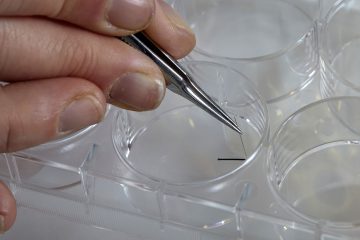CONTRIBUTION. Despite Achilles tendon ruptures affecting a significant number of individuals, research on tendons has not been particularly extensive. However, new discoveries have contributed to increasing hopes of finding better treatment methods. A grant of 2.5 million Swedish kronor from the Lundberg Research Foundation is allocated to new technology that will assist researchers in Gothenburg in understanding why some patients’ tendons heal well while others do not.
Achilles tendon rupture, when the Achilles tendon completely or partially tears, is a very common diagnosis. The injury usually occurs during sports activities and affects significantly more men than women. It primarily affects individuals aged 35-45, but with the increasing number of people maintaining an active lifestyle into older age, its occurrence in older age groups is also rising. The main challenges with Achilles tendon rupture are that healing takes a very long time, over a year, and that many individuals, despite rehabilitation, do not regain full strength and function in the injured leg. Research on tendons has long been neglected compared to research on muscles and bones. However, interest has grown in recent years.

“Tendons were once considered merely as a rope between bone and muscle, with tissue consisting of a type of cells that were inactive and not possible to influence. But now we know that tendon tissue, on the contrary, is both multifaceted and complex,” explains Pernilla Eliasson, Associate Professor of Orthopedics at the Sahlgrenska Academy and head of the Orthopedic Research Unit at Sahlgrenska University Hospital.
Her research for nearly twenty years has focused on tendons and healing of tendon injuries, aiming to understand what factors in the tendon and the surrounding muscles affect healing. One way to achieve this is to determine what distinguishes patients who regain full function after an Achilles tendon rupture from those who do not.
Cultivating artificial tendons

Through close collaboration with the orthopedic clinic at Sahlgrenska University Hospital, researchers have access to tissue samples from patients with injured Achilles tendons. These samples are studied at the cellular level.
“A patient may have active cells with characteristics beneficial for healing and repair, while another may have cells that do not behave this way at all. We want to find out what in the cells causes this difference. Additionally, we want to see the differences in tissue cells from different patient groups, such as older and younger patients,” explains Pernilla Eliasson.
Another way to compare patients’ cells and healing ability is to extract cells from the tendon tissue and cultivate small artificial tendons. With such a method, researchers can study the cells’ characteristics and activities relatively quickly and compare them.
New technology provides new opportunities
To create the best possible conditions for research, Pernilla Eliasson has applied for and received funding for new technical equipment. A grant of 2.5 million Swedish kronor from the Lundberg Research Foundation enables an upgrade of the unit’s laboratory with a modern cryostat, a flow cytometer for efficient analysis of various types of cells, and real-time PCR. The latter makes it possible to study gene expression, the process by which information in a gene’s DNA is transferred to the cell’s structures and functions.
“By studying gene expression, we can look at several different parameters simultaneously and perform analyses that help us choose the right path forward, clarifying which tissue samples or which proteins we should examine more closely.”

Another important acquisition is a materials testing machine that allows researchers to subject the laboratory-cultivated small tendons to stress.
“We want to develop treatments that strengthen the tendon. With a materials testing machine, we can evaluate whether what we subject the tendon cells to has any effect. The machine’s stress on the cultivated tendons corresponds to a person using and stressing their leg. Stress is very important; it is how we communicate with our cells and tell them what functions they need. Pressure indicates the need to develop cartilage in a certain place, while tension indicates the need for tendons.”
The new laboratory equipment will benefit the entire research unit. The need to understand what distinguishes patients who heal well from those who do not exists in several areas of orthopedics, according to Pernilla Eliasson:
“A flow cytometer and a real-time PCR are examples of equipment that will definitely be very useful in many of our areas. We are very skilled in orthopedic research in Gothenburg, but we need to improve a bit on the preclinical work, which requires a well-equipped laboratory. Now we can upgrade our work, progress faster in research, and put what we do here on the map even more clearly than before.”
BY: LUNDBERG FOUNDATION
PHOTO: BO HÅKANSSON











Leave a Comment